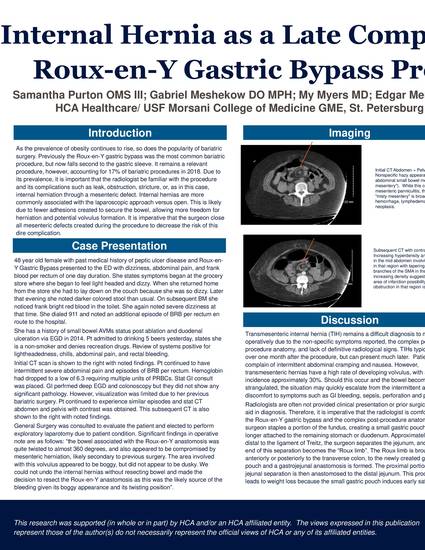
- hernia,
- intraoperative complications,
- gastric bypass,
- bariatric surgery,
- transmesenteric internal hernia,
- TIH
As the prevalence of obesity continues to rise, so does the popularity of bariatric surgery. Previously the Roux-en-Y gastric bypass was the most common bariatric procedure, but now falls second to the gastric sleeve. It remains a relevant procedure, however, accounting for 17% of bariatric procedures in 2018. Due to its prevalence, it is important that the radiologist be familiar with the procedure and its complications such as leak, obstruction, stricture, or, as in this case, internal herniation through a mesenteric defect. Internal hernias are more commonly associated with the laparoscopic approach versus open. This is likely due to fewer adhesions created to secure the bowel, allowing more freedom for herniation and potential volvulus formation. It is imperative that the surgeon close all mesenteric defects created during the procedure to decrease the risk of this dire complication.
Available at: http://works.bepress.com/my-myers/3/
